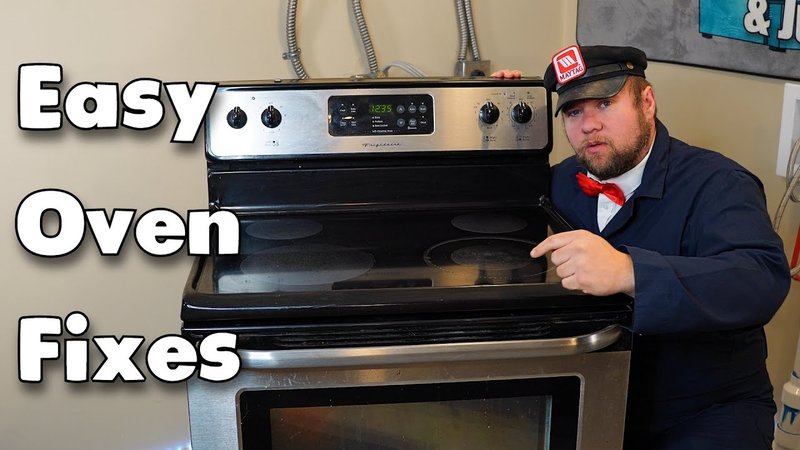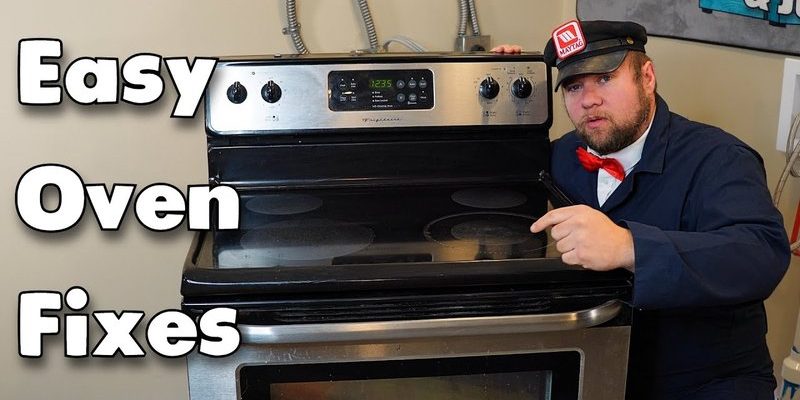
Now, you might be thinking, “What’s the big deal?” After all, the oven still turns on and seems to work. Here’s the deal: ignoring this error could lead to uneven cooking, wonky temperatures, or even your oven damaging itself over time. Think of it as driving a car with a check engine light on—it might get you from point A to B for now, but it could lead to bigger issues later. Let’s dive deeper into why addressing this error is important and what could happen if you just let it slide.
Understanding Error E3 in Frigidaire Ovens
First things first, what exactly is Error E3? In the world of Frigidaire ovens and ranges, this error is typically linked to a failure in the oven’s temperature sensor. It’s like having a faulty thermostat in your home that misreads temperatures, which then disrupts your comfort. This sensor is crucial because it helps regulate and maintain consistent heat levels, ensuring your dish is cooked through perfectly. Without this key component functioning properly, you’re looking at some foods being overcooked while others are left underdone.
As you continue using an oven with a faulty sensor, it may start to show signs of inconsistency. You might find that your baked goods are not rising as they should, or your roast chicken isn’t quite as golden as you like it. The sensor isn’t communicating accurately with the oven’s control board, leading to these cooking conundrums. This can be frustrating, especially if you’ve planned meals relying on precise cooking times and temperatures.
Ultimately, if Error E3 is not addressed, it can lead to long-term damage. The oven may start working harder to reach incorrect temperatures, potentially leading to overheating or component burnout. Imagine your oven trying to compensate for a bad reading, like a person straining their voice to be heard over loud music. It’s just not sustainable and can wear out the oven prematurely.
Consequences of Ignoring Error E3
So, you’ve decided to ignore that annoying Error E3 and just keep cooking. Let’s explore what could happen next. Continuing to use your oven as-is can lead to a cascade of issues. For starters, your energy bills might see a spike. An oven working improperly often uses more energy, just like a car guzzling more gas when it’s not running efficiently.
Furthermore, a malfunctioning oven can pose safety risks. If the oven overheats, it could damage internal components, potentially leading to electrical failures or, in the worst-case scenario, a fire hazard. It’s a bit like ignoring a leaky faucet—the drip might seem minor, but over time, it could cause water damage or increase your water bill unexpectedly.
Let’s not forget the culinary implications. Consistent cooking results may become a thing of the past. Your famous apple pie might come out unevenly cooked, with parts of the crust underdone while the filling is overbaked. It’s the equivalent of baking with unpredictable results every time, which can be really discouraging when you’re trying to impress family or guests.
How to Address and Fix Error E3
Now that you understand the risks of ignoring Error E3, what should you do? Fortunately, fixing this error is often straightforward and can save you from future headaches. Typically, the solution involves checking and possibly replacing the oven’s temperature sensor. Think of it like swapping out a broken thermostat—once it’s fixed, everything runs smoothly again.
If you’re feeling handy, you might try inspecting the sensor yourself. The temperature sensor is usually located inside the oven and can be accessed by removing a few screws. Ensure the power to the oven is turned off for safety. Once you’ve got it out, you can inspect for any obvious damage or test it with a multimeter to see if it’s functioning correctly. For those who prefer not to tackle it alone, calling a professional appliance technician is a solid choice to diagnose and repair the problem.
Preventative measures can also help avert future issues. Regularly cleaning your oven and ensuring that the temperature sensor is free from food debris can keep it functioning optimally. It’s much like keeping your car in good shape with routine maintenance—better in the long run and less prone to surprise issues.
Preventing Future Problems
The best approach is often prevention. To keep your Frigidaire oven in top shape and avoid seeing Error E3 again, regular maintenance is key. Regularly check the sensor and clean the oven to prevent debris build-up that might affect temperature readings. It’s a bit like dusting and vacuuming your home to prevent clutter and maintain a welcoming space.
Consider scheduling professional maintenance annually. Having a tech come out to inspect and service your oven can ensure small issues are caught early before they escalate. It’s similar to getting an annual physical—a way to ensure everything is functioning as it should be.
Lastly, keep your appliance manuals handy and familiarize yourself with common error codes. Being proactive and informed can help you quickly identify and resolve issues when they arise, keeping your kitchen running smoothly. In the culinary world, as in life, being prepared can make all the difference.
By tackling Error E3 head-on, maintaining your oven, and taking preventative steps, you ensure a safe, efficient, and fun cooking experience. After all, we all want those home-baked cookies to come out just right!
